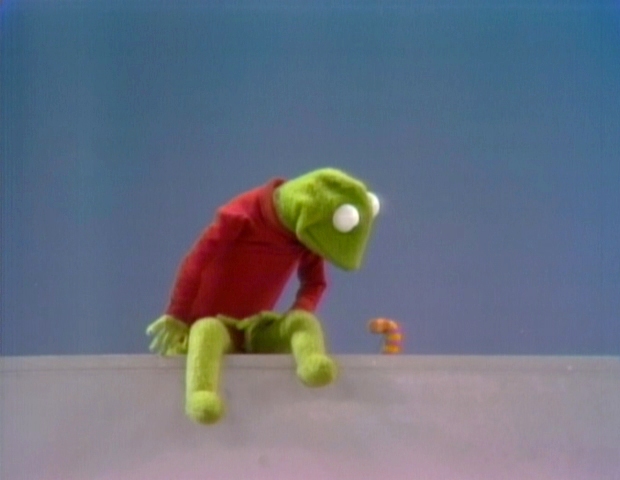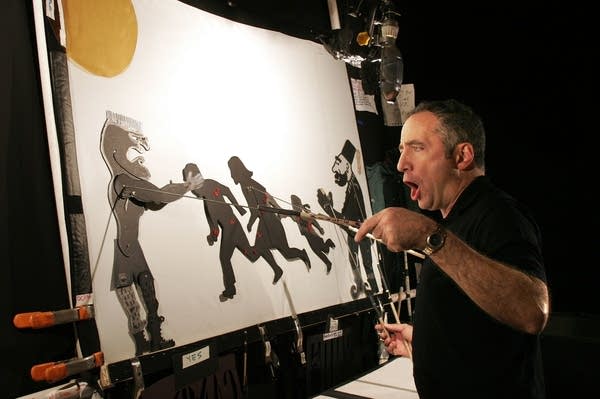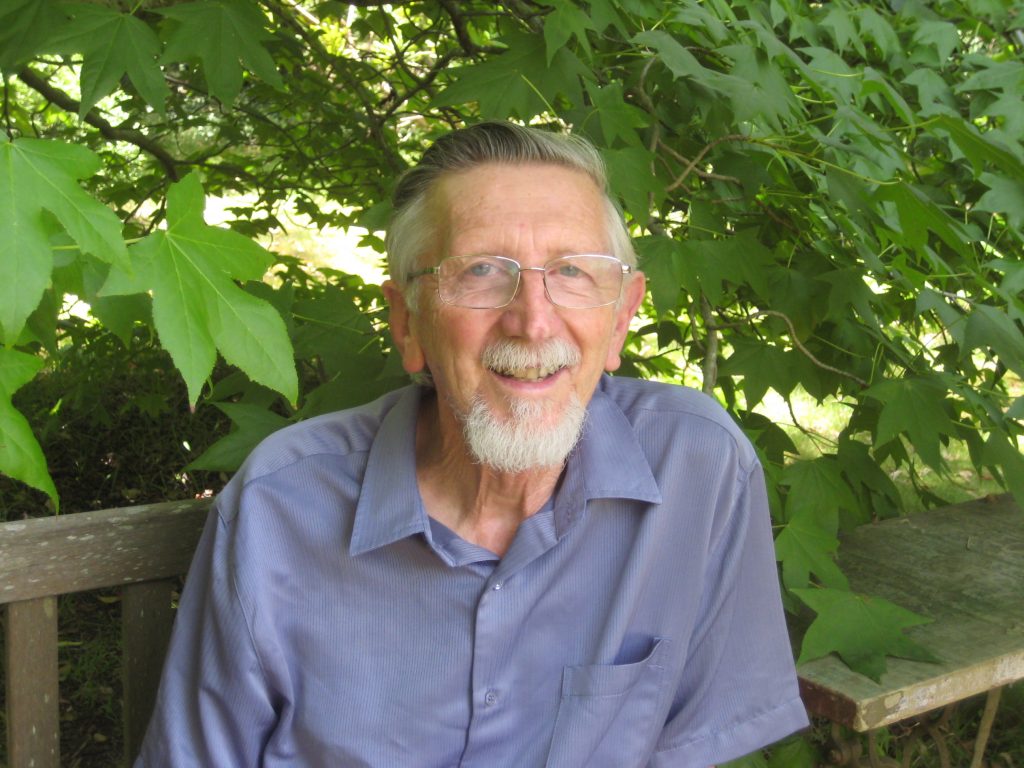1955-Present: The Age of Postmodern Puppetry from Sam & Friends to The Sundowners and Beyond (Cont’d)
From Puppetry: An Illustrated History, by Arno Strengzonmi
By 1990 the age of postmodern puppetry was starting to break out in its own right. For 35 years international popular puppetry in general, and postmodern puppetry in particular, had been dominated by one name: Jim Henson. The Henson or Muppets Method of soft puppetry had not just redefined what the ancient art of puppetry could be, it had come to dominate popular postmodern puppetry, the field that Jim and Jane Henson had effectively created without realizing it.
From the silly insanity and comedic chaos of the original
Sam & Friends in the late 1950s to the triumphant debut of
Sesame Street in 1969 through the rise and peak of
The Muppets in 1979 and through the increasingly magical achievements of the techno-wizards at the Disney Creatureworks (which many in the industry still called the “Henson Creature Shop”) in the 1980s, Henson was the One Big Name. Henson’s children, in particular son Brian and daughter Heather, would continue to carry the torch of postmodern puppetry into the next millennium, even as Jim Henson himself settled into the more detached and paternalistic world of executive leadership.
But through the 1990s and into the new millennium, new names, many of them trained or funded or promoted by Henson himself, began to enter the fray. From small arthouse puppet theaters in big cities and small hippie towns, to major theatrical extravaganzas on Broadway and the West End, to the small screen and the big, to the sweat and blood of street politics, puppetry in the postmodern era was entering into a new Golden Age. It was an age that would see new techniques and materials and post-digital nostalgia for literal hands-on media bring in new audiences, young and old, and see the post-Henson renaissance spin off in new and unexpected ways:
Theatrical shows that turned the stage into an immersive experience.
Sensual and intimate artistic reflections on life, love, and existence.
Feminist reinterpretations of Punch & Judy.
Wisecracking robots who belittle bad filmmaking.
Digital puppetry techniques that turned computer graphics into interactive characters.
Immersive and interactive walkthrough experiences that made art real.
Towering giants who walked the streets in the name of human rights.
Artistic. Popular. Political. The world of postmodern puppetry was about to grow in ways that Jim and Jane Henson could never have expected when the original Kermit, an abstract non-amphibian creature cut from Jim’s mother’s old coat, first lip-synched to popular music in 1955.
For the Art…
In 1978, backed spiritually and financially by Jim Henson himself, the Center for Puppetry Arts had opened in Atlanta, Georgia. It was one of the first and most regular recipient of grants from the Jim Henson Foundation, a non-profit devoted strictly to the patronage and promotion of the art of puppetry.
Founded by Vincent Anthony and Mitchell Edmonds, who toured with the New York based Nicolo Marionettes under the tutelage of Nicolas Coppola, the Center was and remains a place that celebrates and supports puppetry in the US and around the world, be that the continuation of the ancient traditional puppetry arts or the new postmodern works. It is a place to showcase puppets as a museum and a venue for live shows. The deliberately Kermit-green, harlequin-patterned building is as close to a Mecca as puppeteers have, unless one counts the original Henson Muppet Workshop in New York.

The Center was one of the first recipients of grants from the Henson Foundation, but many others have since benefitted from its largesse. Julie Taymor, Paul Zaloom, Janie Geisler, Hystopolis Productions, and many, many others have built up their livelihoods from Foundation seed grants and sustaining grants from 1980 to the present day. Many of these people have branched out or struck out on their own, but all hold special places in their hearts for the family and the Foundation that gave them their start.
Julie Taymor’s
Juan Darien, A Carnival Mass in 1988 (Image source Playbill)
Julie Taymor is, perhaps, the most famous and renowned name to build up a career from a Foundation grant, to the point that her Broadway, West End, and other international productions have broken out into the realm of popular entertainment. But it all started on a small stage Off Broadway, ultimately breaking out with 1988’s
Juan Darien, A Carnival Mass and 1989’s
Muppetational. Like Bread and Puppet Theater, whom we’ll discuss soon enough, Julie works
big. Her larger-than-life puppets can take teams of puppeteers to bring them to life.
Her biggest and most famous early production was of course
Muppetational, created in partnership with Disney and Jane Henson and a love letter to the man and family that gave Taymor her break.
Muppetational brought the Muppets to life in unexpected new ways, from the
Sam & Friends sketches of the 1950s to the groundbreaking animatronics of the late 1980s. Many audience members have sat enthralled at the huge, spectacular elements of the production, like fire-breathing cybernetic dragons, but for puppeteers it was one of the seemingly simplest sketches that caught their professional eye: “Inchworm”.
This, but on a massive scale (Image source “amuchdeeperlevel.blogspot.com”)
“Inchworm” is a sketch almost as old as Kermit, and starred a pre-frog Kermit encountering and devouring a series of worms, only for one of the “worms” to be the nose of a giant monster who, in turn, devoured Kermit! But rather than recreate the sketch with simple hand Muppets and display the results on a screen so that the balcony seats could see it, Taymor and her team recreated it at a scale five times larger, with a giant Kermit puppet the size of the Jabba the Hutt puppet from
Legacy of the Jedi operated internally by a team of three performers. The central performer wore a special body rig connected to the shoulders of the giant Kermit and when he or she moved their body, they could make Kermit sway, turn his body, bend over, and sit up. A second performer handled the arms and legs and a third controlled the mouth and head. All three worked in tandem to recreate the dynamic motions that Jim Henson had originated using only his right hand.
Muppetational would of course be only the beginning of a career in theater and even film effects, where her innovative use of large scale rod puppetry could save producers tons of money by avoiding animatronics through the use of efficient practical puppetry. She’d go on to amaze audiences with everything from Martian tripods to abstract animals to friendly dinosaurs, breaking the artificial barriers between arts and popular entertainment time and time again.
Janie Geisler (Image source “redcat.com”)
Janie Geisler was another frequent recipient of Foundation grants in the 1980s and into the 1990s. Unlike Taymor, Geisler would stay within the realm of the High Art. Geisler, born in Georgia, was an early member and supporter of the Center for Puppetry Arts, becoming, along with Bruce Schwartz and Paul Zaloom, one of the standouts in the field of contemporary puppetry. Her puppets straddled the line between realistic and abstract, entering into an uncanny pseudo-realism that made them the perfect vessel for asking complex, existential questions about life and love and self. She’d branch out into artistic animation and abstract filmmaking, becoming a darling of the High Art community while flying under the radar of the mainstream.
Paul Zaloom Shadow Puppets (Image source “mprnews.com”)
Her partner Paul Zaloom, however, bridged the artistic and the popular, from contemporary puppetry to resurrecting the art of shadow puppetry and using it to explore new themes and ask questions both existential and political, while still entertaining. Zaloom expanded into other artistic venues, often comedic, and his strange and tragicomic performance art made appearances on music videos and as the opening act to various popular venues.
Bruce Schwartz (Image source “muppet.fandom.com”)
Bruce Schwartz, meanwhile, who’d made numerous appearances on
The Muppet Show, was reinvigorating the Japanese Bunraku tradition for international audiences. His gentle and elegant fluid puppetry managed to bring the puppets to life in amazingly lifelike ways even as you could literally see him manipulating the puppet. By taking the ancient Japanese techniques and adapting them in new and impressive ways for new audiences, he helped to reinvigorate an art that was slowly going extinct in its native lands, even if his unorthodox non-traditional methods were controversial within the Japanese Bunraku community for precisely that reason.
Hystopolis Productions (Image source “puppet.fandom.com”)
The late 1980s and early 1990s would see many Foundation grants going to the Chicago-based
Hystopolis Productions, founded in 1982 by Lawrence Basgall and Michael Schwabe as an outgrowth of The Experimental Puppet Theater. Hystopolis has pushed the art of puppetry not just in technique, but in style and substance, with otherworldly, surreal, and dreamlike imagery. Hystopolis would perform for children and adult audiences alike, and some performances address adult subjects and concerns. Hystopolis even broke briefly into the mainstream, with their performances appearing on Tim Burton’s
Nocturns and in music videos.
Phillip Huber’s marionettes with partner David Alexander (Image source IMDB)
But not every big name in the contemporary and postmodern puppetry world has been a Henson protégé or grantee. The marionation of Phillip Huber and David Alexander has made a huge mark on the contemporary art of puppetry and marionation, making appearances in feature films[1] and artistic venues the world around. Huber Marionettes elevate the ancient art in new, fluid, and sensual ways, often exploring deep and existential questions and emotions. Huber Marionettes have become the gold standard of the artform for many, redefining the art of the possible in marionation circles.
And then you have Sunset Puppetry. For years it flew under the radar, an underground postmodern puppetry team that performed primarily in the basement clubs of the Sunset Strip in Los Angeles. Sunset Puppetry used the Henson Method, but used it to explore adult concepts and issues like sex, drugs, rock & roll, culture, race, and LGTBQ issues, ultimately cracking mainstream recognition thanks to an adult Red Hot Chili Peppers music video and the Emmy winning “Just One Prick” HBO special. A lawsuit was launched by Disney and then mysteriously dropped in 1988. The puppeteers themselves remained cagey.
In fact, it was only years later that the world discovered who was ultimately behind it: Jim Henson and his children Cheryl, John, and Heather! This little low-stakes “side thing” for the Henson family and Muppet Performers like Richard Hunt and Dave Goelz quickly grew beyond them, however, as a new and diverse group of Angelinos and Angelinas took over the reigns. Sunset Puppetry soon began to expand in an organic way after some of its second generation members launched a franchise in San Francisco. This expanded to other places along the West Coast and then to New York and Chicago and Atlanta and other major cities, with appearances on Saturday Night Live and the like. The Chicago franchise would at first amicably compete with, and then ultimately merge into Hystopolis.
And a branch in Berkeley California would take the political side of the non-profit franchise to new levels, as we shall see later.
To Be Continued…
[1] Huber and Alexander are behind the puppetry in our timeline’s
Being John Malkovich.











